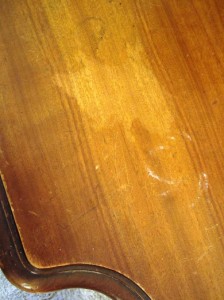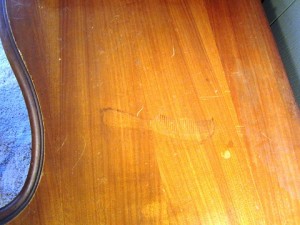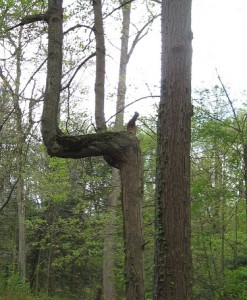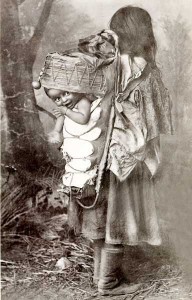My vanity dresser was beautiful once, a piece of furniture handmade of Australian satinwood in the early 1900’s. It matches the rest of the bedroom set with its ornate, curvy lines, inlaid flowers, and multi-hued veneer, and none of it really belongs to us. We’re storing it for a friend, and that “temporary” arrangement has lasted 43 years. (See “Connecting the Dots,” 8/5/09.)
A year ago, my friend Julie (the official owner of the bedroom set) visited me from her home in Germany. She was eager to re-visit her furniture and see how it was doing after its move from Illinois to Michigan 3 years ago. As she walked into the bedroom she said, “Oh Margaret, everything still looks great!”
Then she took a closer look.
The protective glass atop the vanity was long gone, cracked years ago when I forgot to unplug my electric roller set and it overheated. After that the wood top was daily at risk, suffering scratches, nicks, and water damage as time went by. “But,” I told Julie, “maybe those marks aren’t all bad.”
Back in the 1970’s, fancy furniture stores sold tables and dressers advertised as “distressed.” Before finishing, the manufacturer would use chains, nails, and chisels to mark unblemished wood until it was dented, gouged, and scraped, a look meant to resemble a well-used antique. “Heavily distressed” pieces were the priciest.
The defects on my vanity, despite not being intentional, remind me of my own imperfections, nicks, and scrapes, mostly caused through my own foolishness. Furniture can be refinished, bringing it back to perfection, but marks on a life don’t get fixed that easily.
The truth, though, is that every time I’ve put myself in harm’s way and come out the other side “nicked” (sometimes even “heavily distressed”), I’ve come out smarter. The lessons I’ve learned through self-inflicted pain have stuck, and the marks they’ve left have, I hope, morphed into character improvements. And the whole arrangement is ok with God, because he’s hoping we’ll gain wisdom as we suffer through our distresses.
I love the vanity top just the way it is, a bit of family history that’s uniquely ours (even though the vanity isn’t). And there’s one “blotch” on the wood that’s particularly interesting, also somewhat of a mystery. It’s the outline of a comb, which must have been resting in a puddle of caustic liquid in order for it to leave such a mark. When Julie saw it, she ran her hand over the imprint and slowly said, “Wow! What happened here?”
Not having an answer, all I could say was, “Seven kids,” though I felt guilty at that moment for ever having allowed them into our bedroom. I thought Julie might call for a moving van right then, but she just laughed it off like the good friend she is.
And after all our years together, I appreciate that she doesn’t look too closely at me.
“Love prospers when a fault is forgiven, but dwelling on it separates close friends.” (Proverbs 17:9)








